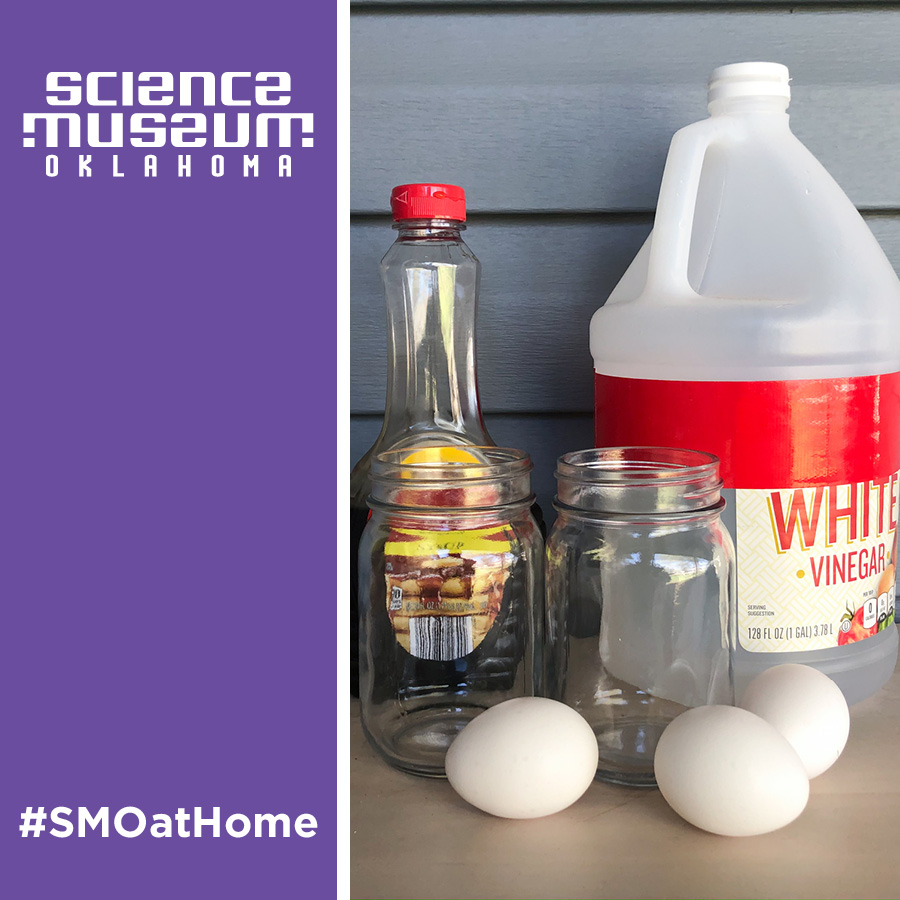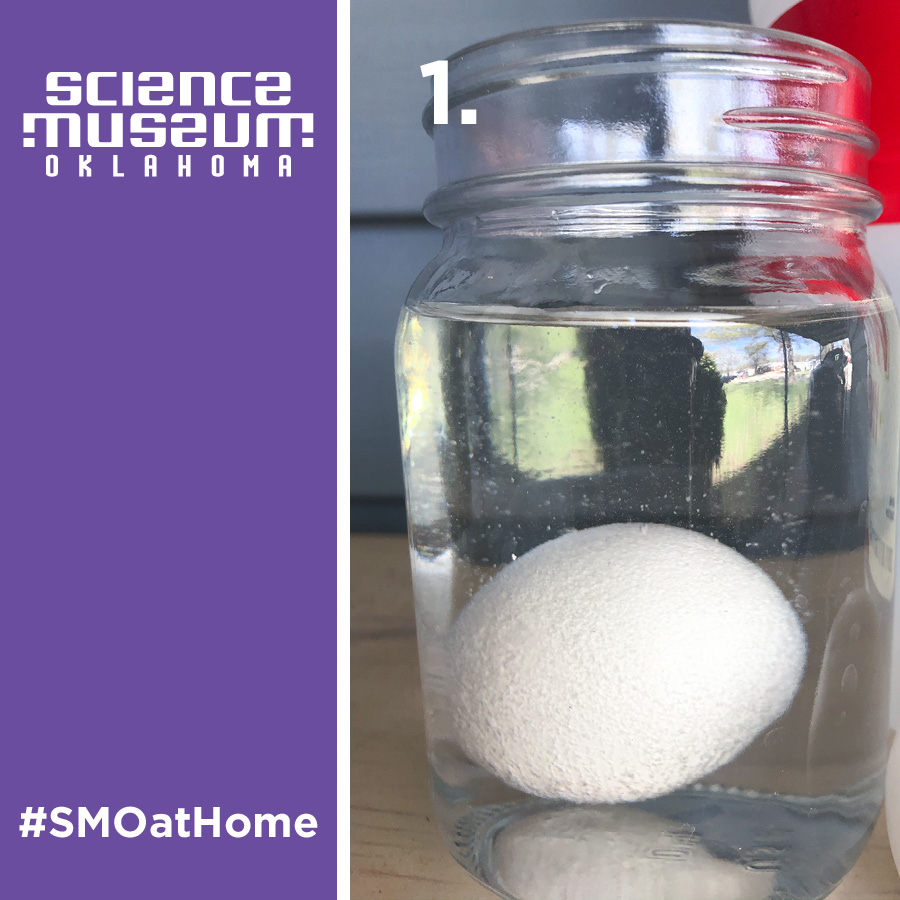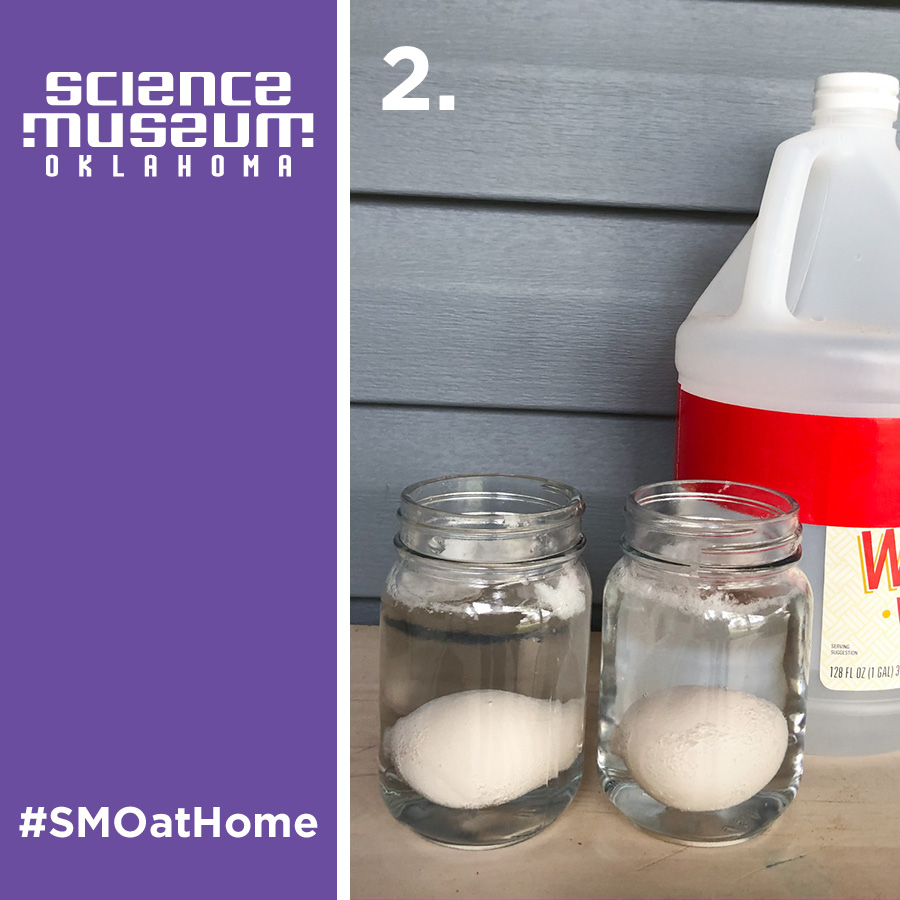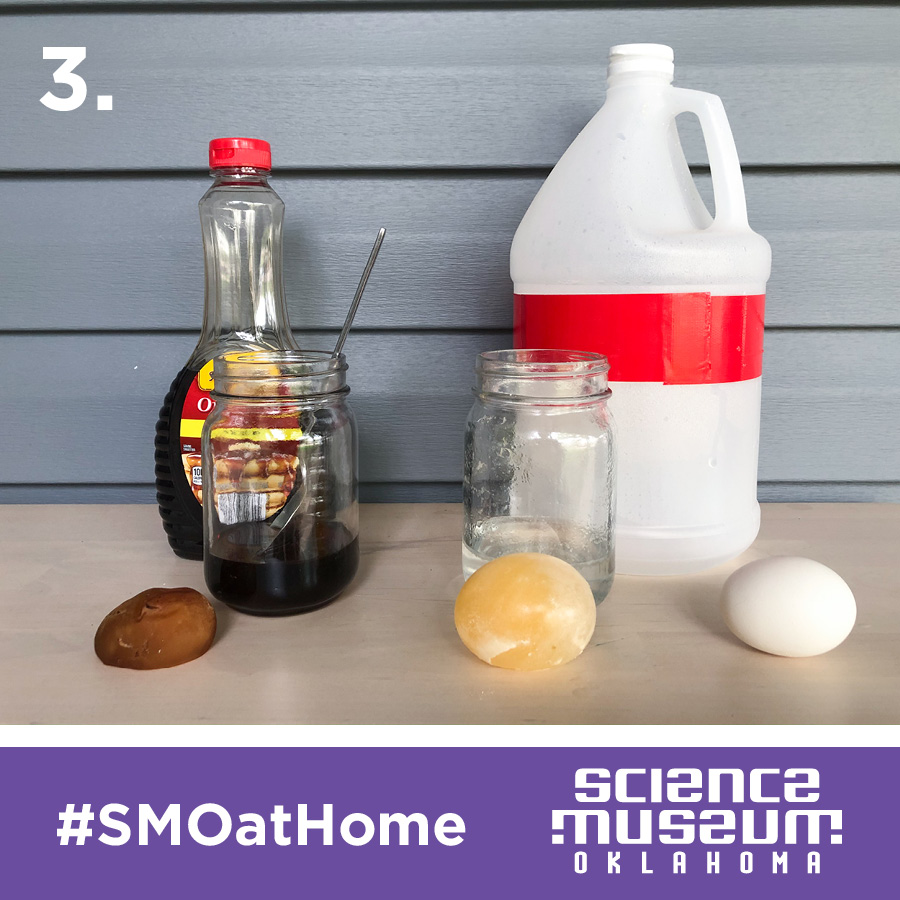Bouncy Egg

Looking for an egg-cellent way to explore osmosis and acid-base chemical reactions? This is a fun kitchen activity that takes time, not thyme, and a couple of things you can probably find at home.
Here’s what you need:
- A glass or jar
- A raw egg
- Vinegar
- Time — This activity will take about two days! You’ll only need to spend a couple minutes with it each day. The chemical reaction will take some time, though.
- To take this activity further, you’ll also need corn syrup. You might not think you have any in your pantry, but don’t give up so soon — many pancake syrups are made of corn syrup. If you’re not a maple syrup-purist, you might be in luck! Food coloring is also a fun addition.
Here’s what you do:
1. Fill a jar with vinegar, and gently place a whole raw egg inside. Don’t crack the egg! Watch as bubbles immediately form around the egg!
2. Wait 24 hours, then replace the vinegar with new vinegar. When discarding the used vinegar, be careful with the egg. Has the egg changed in any way?
3. Wait another 24 hours. Carefully remove the egg from the vinegar. What do you notice about the egg now? Can you gently bounce it?
What’s happening:
The shell of an egg is made of calcium carbonate. Calcium carbonate is chemically a base, or has a higher ph than 7. Ph, which stands for the power of hydrogen, is used to indicate how acidic or basic something is.
Something that is neither acidic or basic, like pure water, has a ph of 7. Pure water is neutral. If something has a ph greater than 7, it is said to be basic. An example of a base around your home is baking soda. Vinegar has ph far lower than 7, so it’s an acid.
When acids and bases meet, there’s a chemical reaction called a neutralization reaction because the two differing things move closer to neutral. In the case of the vinegar and eggshell, you may have noticed that bubbles began forming as soon as the two met.
Over the course of 24 hours you may have also noticed less and less bubbles forming as the acid and base both got closer to neutral. This is why the vinegar needed to be replaced. You likely noticed a considerable change in the look and feel of the egg as well. The bubbles being formed in this reaction are carbon dioxide gas.
As the reaction continues the shell of the egg will completely dissolve. The membrane of the egg, found under the shell, won’t dissolve! Instead it will let some of the vinegar solution pass into the egg through a process called osmosis, and the egg will slightly swell in size. This reaction makes the egg become somewhat rubbery!
Take the experiment further! You’ll need two more items — corn syrup and a metal spoon.
After emptying the vinegar from the jar, place the egg back in and cover it with corn syrup. Gently place the spoon on top of the egg to keep it submerged. Wait 48 hours and use the spoon to retrieve the egg. Rinse it with water. You now have a shriveled up egg! This was done through osmosis, but this time the liquid water left the inside of the egg and traveled through the membrane to the surrounding syrup.
If you decide to make another bouncy egg, what would happen if you put food coloring in the vinegar? Show us your results with #SMOatHome.







